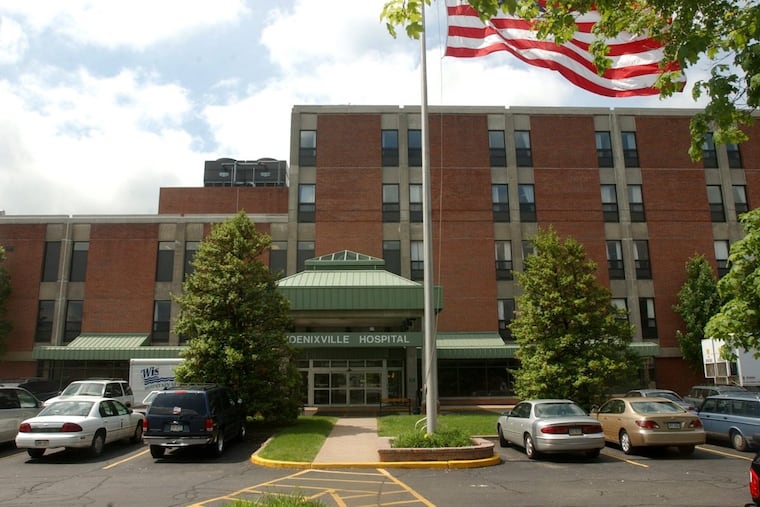Tower Health reports steep COVID-19 related losses
Tower received $98 million in CARES Act grants, but still recorded a whopping $246 million operating loss on $382 million in revenue in the three months ended in June.

Slightly more than $50 million in federal COVID-19 grants did the trick for Einstein Healthcare Network.
Einstein, anchored by a safety net hospital in North Philadelphia, had an operating profit in the three months ended June 30 and finished its fiscal year with an operating loss of a bit more than $4 million, about the same as the year before.
The same can’t be said for Tower Health, which has expanded dramatically from Berks County over the last three years with the purchase of six hospitals in Philadelphia and its suburban counties to avoid being swallowed up by a larger health system.
Tower, based in West Reading, received $98 million in CARES Act grants, but still recorded a whopping $246 million operating loss on $382 million in revenue — which amounts to a negative 64 percent operating margin — in the three months ended in June.
Hospital executives warned early during the coronavirus pandemic that they were staring at potentially debilitating losses without significant aid because they had to shut down the most profitable parts of their businesses to help prevent the spread of the virus.
» READ MORE: How much Philadelphia-area hospitals are getting in federal money for treating coronavirus patients
Reports from Philadelphia-area health systems show that outpatient surgeries were down by about half during the three months ended June 30, compared with the same period a year ago. Overall outpatient visits were down in the range of 30% to 40%, disclosures to bondholders show.
The federal government responded with billions in grants. For some health systems that treated significant numbers of COVID-19 patients, that aid, including so-called high-impact payments based on COVID case loads, absorbed much of the blow from reduced patient volumes and higher expenses.
But $25 million in those second-round payments was not enough for Tower. That money was part of the $98 million total Tower received.
“Tower Health has taken aggressive actions to strengthen its financial performance, including a difficult but necessary reduction in force and the closure of some services,” the system said in a statement about its fiscal 2020 results. The nonprofit cut 773 full-time-equivalent positions in June, a move that is expected to save $76 million annually.
» READ MORE: Tower Health is cutting 1,000 jobs as coronavirus losses mount
For the full fiscal year ended June 30, Tower logged an operating loss of $378 million, taking its two-year total operating losses to $557 million. The losses are concentrated in the Community Health Systems hospitals that it bought in 2017 for $418 million, in the physician practices it owns, and in St. Christopher’s Hospital for Children, which it bought last year in a joint venture with Drexel University.
Tower’s anchor Reading Hospital had $77 million in operating income for the year.
Other health systems faced varying degrees of losses.
In Bucks County, Doylestown Health had a fourth-quarter operating loss of $13 million, for an operating margin of negative 14%. For the full year, it had a $28 million loss on revenues of $358 million. “The financial sacrifices Doylestown Health made during the pandemic were significant and to date have only partially been addressed by the federal CARES Act,” chief executive Jim Brexler said in a statement. Doylestown received $6 million in federal aid though June 30.
“Through August, patient volumes have been increasing and are currently near pre-COVID levels but still limited due to space and scheduling precautions for patients and staff,” Brexler said.
Losses at the University of Pennsylvania Health System, the largest in the Philadelphia region by revenue, were significantly less than at Tower. Penn had a $41.7 million operating loss, which translates to a negative operating margin of 2.3%. Penn received $213 million in CARES Act grants.
A Penn spokesperson said patient volumes ramped back up more quickly than anticipated, reaching 90% of pre-COVID levels by the end of June, helping to trim a larger expected loss.
Nonprofit health systems with municipal debt outstanding release their financial results based on a scheduled agreed to with lenders. Children’s Hospital of Philadelphia, Holy Redeemer Health System, Main Line Health, and Temple University Health System have not yet reported.
Thomas Jefferson University, which like Tower has expanded rapidly through acquisitions, in mid-August reported a fourth-quarter loss of $193 million, for a negative margin of 15.5%.
» READ MORE: Jefferson Health’s expansion hits a deep pothole with large COVID-19 loss
In New Jersey, Cooper University Healthcare, Inspira, and Virtua have reported results for the June quarter, but their reports are not comparable to their Pennsylvania counterparts because they do not cover all business units.